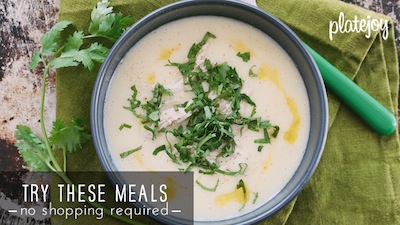I really liked growing up as a little sister.
As the number two to my big brother’s number one, I was privy to Superman pajama hand-me-downs; slightly broken-in parents (who needed less convincing when it came to eating chocolate cookies for breakfast or going to my first middle school dance); immediate protection against loser boyfriends; and of course, all of big bro’s sage advice. And his good looking friends to swoon over, too.
But there were moments when I cursed the day that I was born second.
Like when my older brother, seemingly sweeter than me, took advantage of my trusting personality. When he played with my absolute adoration of everything he said and did. When he told me that he would give me one million dollars if I ran around the house fifty times. And after I huffed and puffed and completed my half century of laps, he told me – with that older brother grin – that he never said one million dollars, but one million “doll hairs,” and handed me my very own teddy bear as my consolation prize. Which did little consoling in that moment of complete despair.
I thought I had made it rich.
Was I sad? You bet. Did I feel betrayed? Absolutely. Was there a lesson to be learned? Yes. And that lesson is that tricking people is fun. Especially when you don’t have to run around a house.
Let me be completely honest with you – this shrimp curry has no shrimp in it. Not because I don’t like shrimp. And not because I want to make you cry over false promises. I would never do that, like someone else I know.
I used to eat it by the bucket full. But because shrimp now exceeds my limit of sodium per serving, weighing in at 160 mg for 4 shrimp, or 480 mg per 3 ounces according to the USDA nutritional database. This may be fine for most people, but when it comes to the food I eat, shrimp I must skip.
So when I had a Skype cooking date with my blogger friend, Allison Fishman (who’s book is about to be released!), I had to use some of that older brother trickery to get around the salt challenges of our planned recipe: Coconut Curry Shrimp.
Making over this dish was pretty easy. I decided to use some delicate rock fish as the main seafood substitute, which I diced to look like chunks of shrimp. And as for the other ingredients, I didn’t need to do much altering. I recently found some tamarind paste that is quite low in sodium. But at the time of making this meal, I made my own paste by soaking tamarind pods in coconut milk (used later in the recipe) and then grinding them with a mortar and pestle. And to replace the zing of salt, I added fresh cilantro and a squeeze of lime at the end.
And there you have it – Counterfeit Coconut Shrimp Curry.
A little lie and a lot of flavor.
Thanks for the lesson, bro.
Chow on.
recipe adapted from Anjum’s New Indian Cookbook
- 2 tablespoons vegetable oil (or coconut oil)
- 5 cloves
- 3-inch piece of cinnamon stick
- 1 medium-large onion, finely chopped
- 1-inch piece fresh ginger, peeled and roughly chopped
- 7 large cloves of garlic, peeled
- 1/2 teaspoon chile powder
- 1/2 teaspoon ground turmeric
- 1/2 teaspoon ground cardamom
- 1/2 teaspoon ground curry powder
- 1 teaspoon ground coriander
- 4 small tomatoes, quartered
- 1 green chile, minced
- 1 can light coconut milk
- 2 filets of rockfish, cut into shrimp-sized chunks
- 2 teaspoons low sodium tamarind paste or 2 teaspoons of tamarind pods soaked in coconut milk for 30 minutes and then muddled into a paste with mortar and pestle
Before you even start, get some rice cooking in a pot or your rice cooker.
Heat the oil in a medium nonstick skillet. Add cloves and cinnamon, and cook until they are fragrant. Add the onion and cook until golden, 8-10 minutes.
Puree the ginger and garlic in a food processor and add to the skillet with a tablespoon of water. Cook over medium-low heat for 2 minutes until the water has evaporated. Add the spices, tomatoes, and green chile. Cook for 15 minutes. Add coconut milk and bring to a simmer for 5 minutes. Add rockfish and cook for 3 minutes more. Remove from the heat.
Put tamarind paste in a small bowl, add 2 tablespoons of curry broth and stir to make a cohesive mixture. Return tamarind broth to the skillet and mix well. Serve over rice and enjoy. And don’t tell anyone there isn’t shrimp in there.








I had no idea shrimp had so much sodium! There goes the shrimp bisque for Sunday’s lunch party…Love your clever “trick” recipe!
Try this recipe for Lobster- less Chowder! http://sodiumgirl.wordpress.com/2010/09/17/salt-free-my-recipe-lobster-less-corn-chowder/
Hi SG,
I am a bit confused. Did you soak tamarind pods ( in last paragraph of blog) or cardamom pods ( last in the ingredient list)? They aren’t the same thing , are they? Thanks.
Nope not the same thing. Thanks for catching that.
This post was alarming to me. According to the NutriBase Complete Book of Food Counts 3 oz of raw shrimp have 144 mg of sodium. According to Acaloriecounter.com the same measure has 121 mg of sodium. A check of a couple of other sites also indicated between 125-140 mg. per 3 oz. I would certainly trust the USDA but this is a big difference. I don’t eat shrimp often but at the lesser measure I don’t purposely stay away from them. If the USDA is correct I would probably drop them from my diet.
Hi Karen! You bring up a really good point. The book I use for my sodium information (the Low Sodium Foods Pocket Guide by Bobbie Mostyn) says that it is 126 mg per 3oz. But it was written in 2003. The USDA site – link: http://www.nal.usda.gov/fnic/foodcomp/cgi-bin/list_nut_edit.pl – says that 1 medium shrimp is 34 mg of sodium, that 4 large shrimp are 158 mg of sodium, and 3 oz is 481 mg of sodium.
It is a lot of different information. So here’s one good way to check – look at shrimp (not battered or seasoned) in the frozen food section and see what the sodium count is on the box. Perhaps it can give us a good measurement.
I wish I had a definite answer on this subject. And if anyone out there wants to weigh in, please do! I am finding my way through this sodium-filled world like you. Information constantly changes and I am always learning. So let’s keep this discussion rolling! I’ll continue to reach out to other bloggers and nutritionists to hopefully settle this debated info!
I have been on a low sodium diet for 6 years. I love shrimp and I continue to eat them on my diet. Shrimp are relatively low in sodium if you pick the right kind. You ALWAYS have to get it raw. (Frozen or Fresh) Depending on which brand you purchase they have 140-160mg for 4 oz. Cooked shrimp from the meat case have over 500mg in sodium for 40z. I assume it’s the seasoned water it is cooked in that makes it so high. Just thought I would share. Love your blog! Been a follower for quite some time.
Hi Ron! Thank you so much for weighing in on this issue.
I think you are totally right on about buying fresh shrimp and avoiding the pre-cooked, possibly salt-watered versions. I’ve done some more researching and have found that some shrimp can be frozen in brine when caught out in sea. So following the nutritional information on the back of a frozen shrimp package is definitely a safe way to go.
I’ve written a note to the USDA Food and Nutrition site to check into these discrepancies. I hope to have a final answer soon.
In the meantime, keep up the convo!
I’m happy to read everyone’s thoughts on this subject. I like to buy fresh shrimp at Whole Foods but these may have been flash frozen in brine as Sodium Girl noted. Next time I will ask about that. The bag of frozen shrimp tails on that I recently bought at Costco claims 280 mg per 4 oz. It’s a jungle out there 🙂